Can Dark Souls Remastered improve on the modded PC original?
Tests suggest a substantial upgrade.
Dark Souls Remastered is fast approaching its May 25th launch and based on our recent look at work-in-progress PS4 Pro code, there's the sense that we're looking at a refined, optimised port rather than a fuller, top-to-bottom refresh of the whole game. So where does that leave the original 'Prepare to Die' PC version, already improved significantly via some heaving community modding? Namco Bandai is actually withdrawing that version of the game to new buyers and offering a 50 per cent discount to coax existing users into purchasing the remaster, but with mods like DSFix and SweetFX already enhancing the game significantly, the official game has a lot to match.
Disregarding the game's mods for a moment, the Prepare to Die edition is clearly not fit for purpose in the modern era. Notoriously, it lets you change the output resolution, while natively it's still only running at 1024x720 - the same as on the last-gen consoles. Add in the fact that it's capped at 30fps with poorly implemented mouse and keyboard support, and the dismay back in 2012 is understandable. Compared to Dark Souls 3, where From Software's proficiency in PC conversions has grown hugely, the first outing was a massive disappointment for fans.
Coming to the rescue, Durante's DSFix smartly worked around its limits to let you play at any resolution, while also liberating the game from its 30fps limit. Eventually, this injector mod added options for anti-aliasing, depth of field, anisotropic filtering and screen-space ambient occlusion. Factor in the numerous fan-made texture mods for Dark Souls on PC since, and it's a transformed experience to the one the developer originally intended. The catch is that not everything is perfectly optimised with these mods: to this day the game still struggles to run at a smooth 1080p at 60fps, even on the most powerful hardware.
To put this into perspective, even a Ryzen Threadripper 1950X system paired with a GTX 1080 Ti can't sustain a locked 1080p60, with the arrival of the Asylum Demon causing drops to the mid-40fps. It's certainly playable at 60 most of the way, but clearly the Prepare to Die Edition wasn't built with this in mind. Equally, there's a range of glitches tied to the game running above the intended 30fps, while cutscenes are locked at half-refresh no matter what. Modding the original game isn't a watertight solution then, but it's the best we've had until this point.
Fast forward to 2018 and there's a new hope. Polish developer QLOC is understood to be at the helm of Dark Souls Remastered for consoles and PC. The preview PS4 Pro build we tested offers a higher resolution of 3200x1800 with 60fps as a target, and the opening areas run beautifully at 60fps. While the as yet unseen Blight Town will be the litmus test, it does show that the team is aiming to optimise for higher frame-rates on multi-core CPUs. If a PS4 Pro can deliver this level of performance from its lacklustre AMD Jaguar cores, we're hopeful that the PC remaster will deliver a similarly smooth ride, and we should finally get the basic functionality we expect from a PC port, including arbitrary resolution and display refresh selection.
However, based on the time we've had with the PS4 Pro version so far, is there more to the remaster than simply fixing the Prepare to Die Edition's most basic flaws? To find out, we took our existing work-in-progress Pro captures and stacked them up against the modded PC version, with DSFix enabled and resolution set to 4K with a capped 60fps frame-rate. We also used the mod's VSSAO shading, improved texture filtering option and bumped depth of field resolution to 1080p. Inevitably, that native 4K picture with DSFix looks much crisper next to our PS4 Pro remaster footage, but obviously this part of the set-up should be matched pixel-for-pixel by the PC remaster. Resolution apart, in terms of the overall visual feature set, we do expect the PC game to closely match QLOC's console efforts - perhaps with a small range of further embellishments.
As things stand, there are parallels between the two renditions of Dark Souls - certainly in improving anisotropic filtering over the vanilla PC version. Plus, while ambient occlusion isn't as thick as the form employed by DSFix, the remaster still uses its own variant to great effect. But what becomes clear pretty quickly is that the new release goes much further. It's not just the shade beneath grass that's changed. Unlike the mod, plants now animate with a gentle sway, and foliage around the Firelink shrine area actually billows in the wind - it's no longer static. With or without mods, there's no way the Prepare to Die edition can match this; it's only by working with the codebase that the remaster is making a step forward. Extra bushes are brought into the scene too, and you can even catch a cloud of smoke swirling around the bonfire. Upgrades may be subtle, but they're beyond the scope of a mod, and the more you look, the more you see how the remastering work makes a genuine difference.
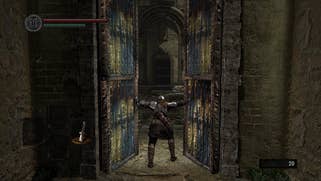
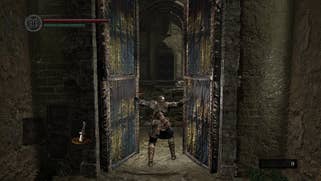
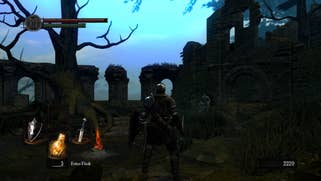
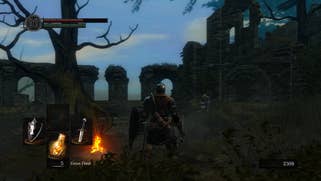

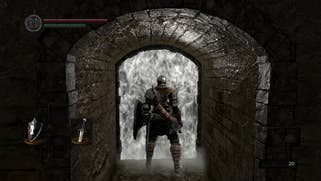



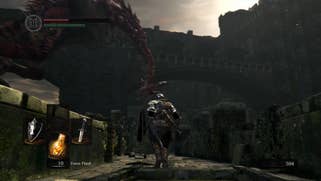
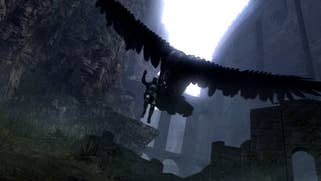

There are new effects, for example. The updated volumetric fog on doorways uses a more complex shading technique that, ultimately, isn't an option on any mod out there. The remaster is bringing something new to the table in this sense, and likewise for the new alpha and particles used for dust. Notably, when bosses like the red wyvern crash down on the bridge, they leave a more striking, detailed burst of alpha in the remaster. These don't feel bolted on; they're up to par with the Dark Souls 3 quality of each effect, and blend well into the original, upgraded presentation.
Lighting quality is also inimitable in the remaster, simply due to the use of a revised model. Light bounce obeys a new logic here; some scenes look better on the original, others more so in the new version. Two good examples occur in the opening asylum: the new shader-work on a knight's armour looks simplified next to DSFix, despite the same assets being used across the character and nearby textures. And once we get moving, the specular mapping on walls comes to life more vividly in the remaster, while it looks dull and lifeless in portions of the original. It's a mixed bag then - but on balance Lordran is still recognisable. Likewise for the reworked bloom effect; even with SweetFX mod controls for a pseudo-HDR, it's impossible to exactly mimic what the remaster's doing in its approach to lighting.
For purists, it would perhaps be preferable to have access to the original lighting, effects, and shaders - but the new release holds up nicely overall. You'll also notice full-screen motion blur is forced on PS4 Pro remaster too - explaining why it can look a little blurrier in motion - whereas the original code only uses per-object blur on character movement. Fortunately, for the PC remaster we are promised a toggle for the blur effect if you're not keen. Indeed, the graphics menu of Dark Souls Remastered on PC lets you access a few new options too: there are two anti-aliasing settings for FXAA, and temporal anti-aliasing. Plus, new to the PC options menu is a toggle for depth of field, and one for ambient occlusion.
As huge Dark Souls fans ourselves, the remaster's real draw isn't solely about its visual upgrades. Attention is also paid to quality of life improvements as well, seemingly based on feedback from series veterans. In gameplay, for example, you can now switch covenants at bonfires - rather than tracking down different characters to make the change. Networked play also gets a revamp: PvP games now borrow Dark Souls 3's password system, and allow up to six players online, rather than the four of the original. All these tweaks go beyond the scope of the original, even with the helping hand of the best mods on the scene. Bundle in tweaks to the menus, potential bug fixes, and optimisations for modern PCs, and this should stand as the definitive version.
All told the half price discount is a nice gesture, but there is a small twist. If you'd still like to access the Prepare to Die edition already on Steam - just for posterity - you'll have to get in quick. On 8th May, it will be removed from Steam store, and replaced by this remastered version on the 25th May. There's no rush if you have the Prepare to Die edition on your Steam account already; you can always access it, download and play it from that point onwards. But supposing if you haven't bought the original, you simply won't be able to after that date - the Remastered edition will become the only entry on the store. For most people it won't matter - it's more a point for the most ardent fans.
Based on the PS4 Pro version at least, the remaster is shaping up to be all you'll need, and we expect the PC version to deliver an equivalent feature set. There are still a lot of unknowns on how the whole package holds up, but for newcomers or returning fans this is this is looking like a must, and the shift to an optimised 60fps is the main attraction. From our perspective, it's the key disadvantage of modding the original PC version - no matter how powerful your PC is, performance just isn't good enough. Ultimately, if Dark Souls Remastered on PC delivers a hassle-free 60fps experience with a properly implemented resolution selection, that's good enough for us. The jury's out until final code is in our hands, but in theory at least, Dark Souls Remastered should be a worthy replacement for the existing PC release.











